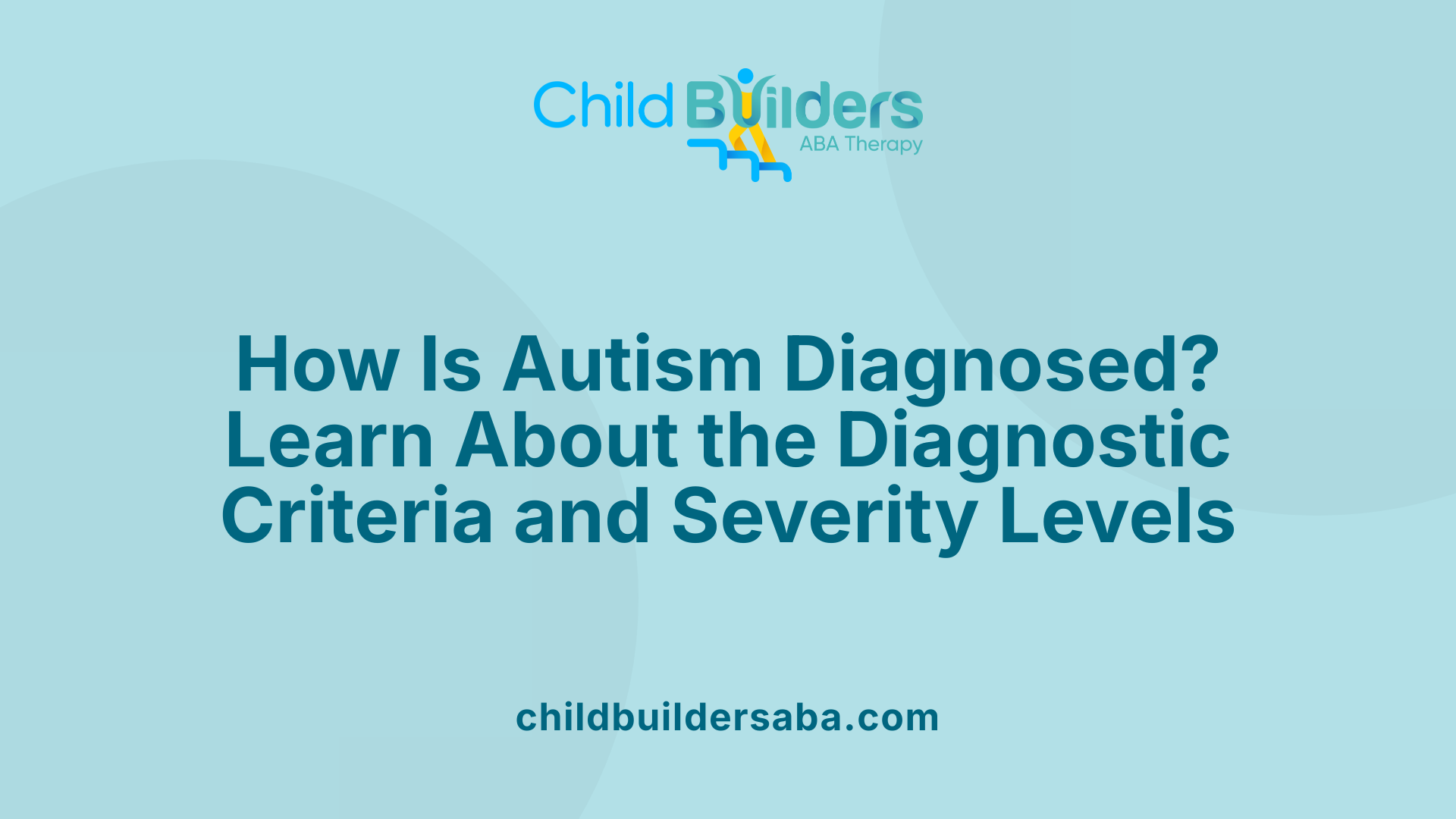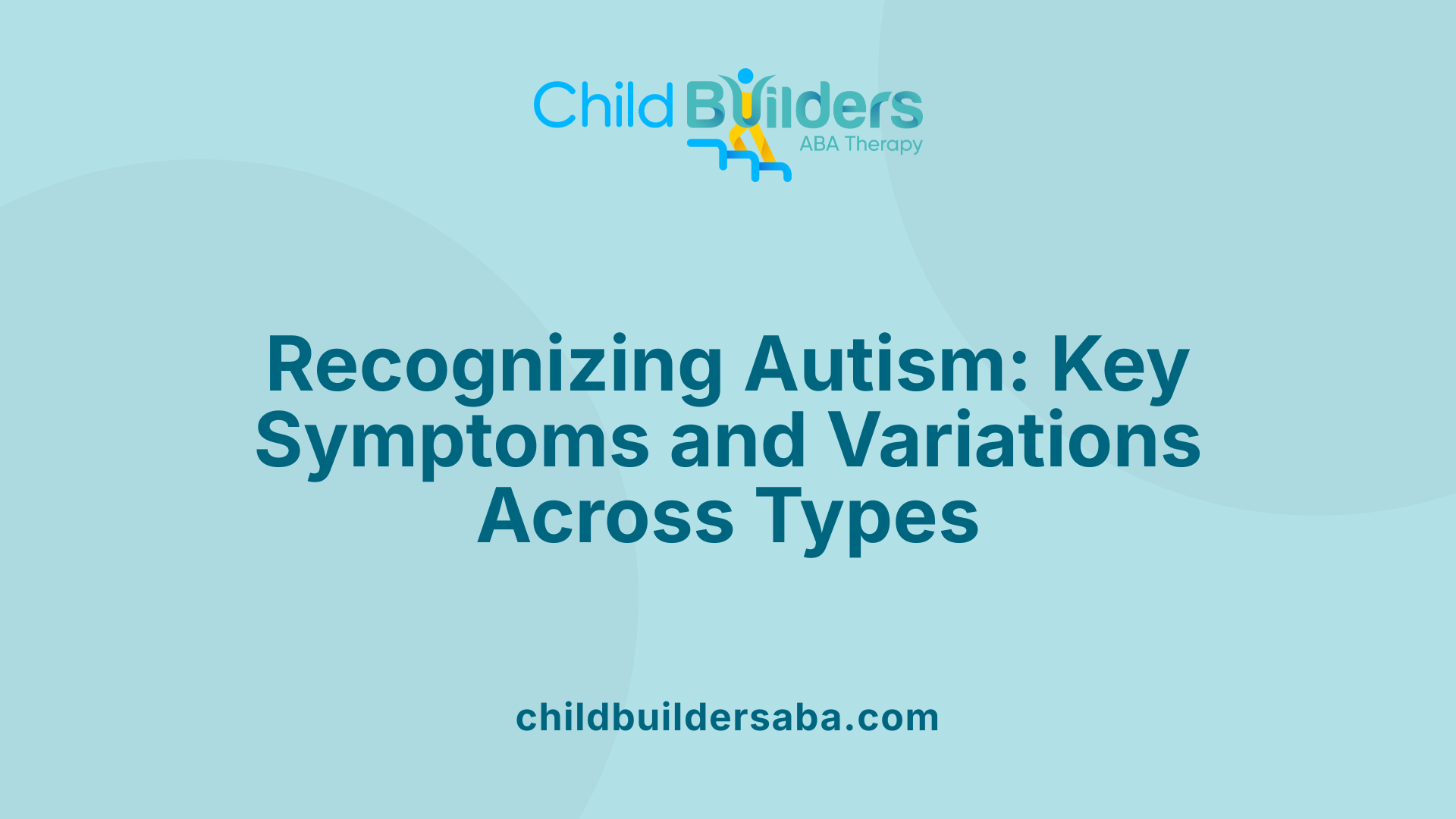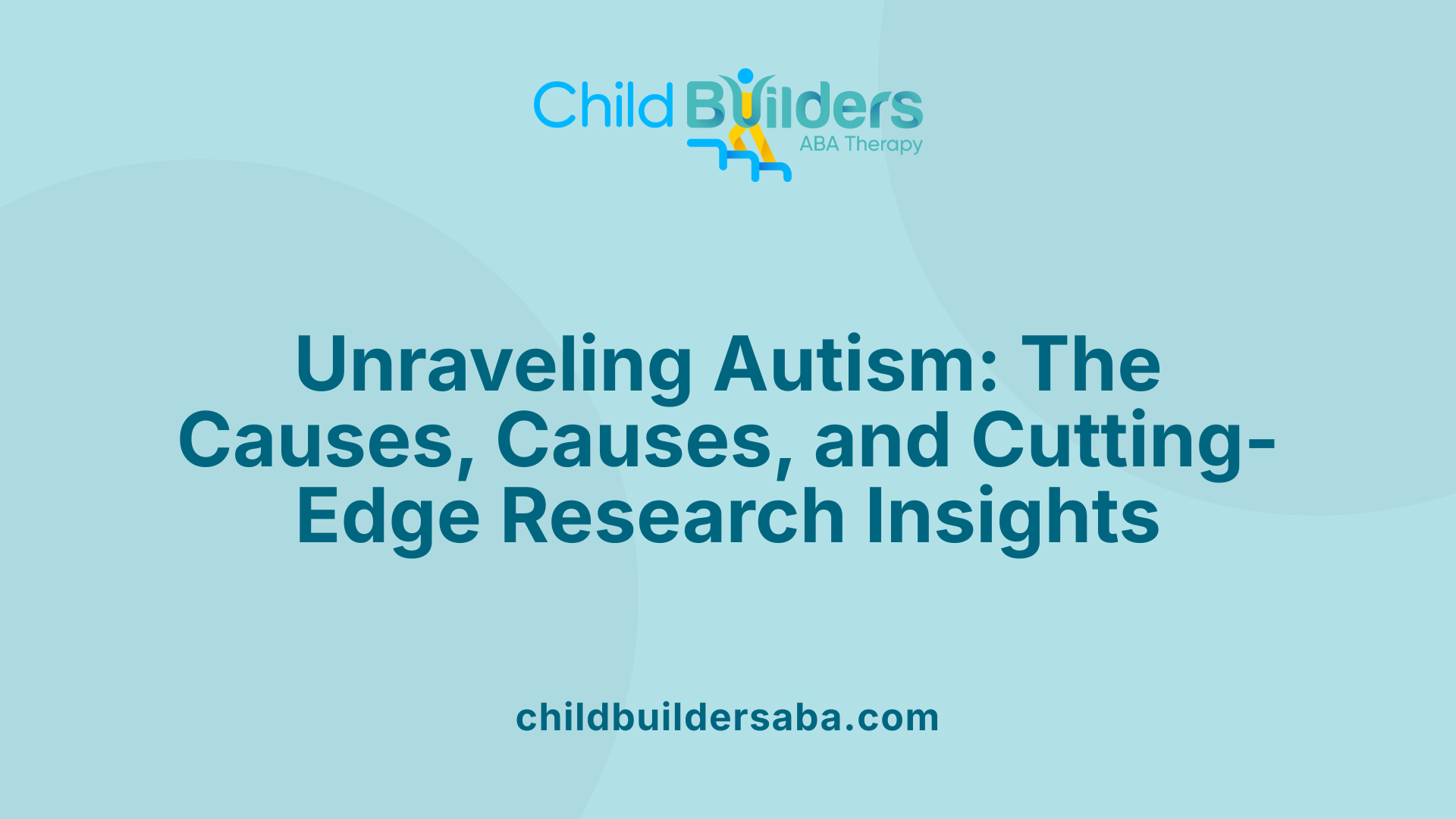Types Of Autism

An Overview of Autism Spectrum Disorder
Autism Spectrum Disorder (ASD) encompasses a range of neurodevelopmental conditions characterized by challenges in social communication, interaction, and repetitive behaviors. Recognized as a spectrum, ASD includes various conditions previously classified separately. This article explores the different types of autism, their classification, symptoms, severity, diagnosis, underlying causes, and ongoing research, providing a comprehensive understanding of this complex domain.
Main Types and Classifications of Autism Spectrum Disorder

What are the main types and classifications of autism spectrum disorder?
Autism Spectrum Disorder (ASD) is a complex neurodevelopmental condition marked by challenges in social interaction, communication, and the presence of repetitive behaviors or narrow interests. Historically, what we now recognize as ASD was classified into several separate disorders. For example, early diagnoses included autistic disorder, Asperger’s syndrome, Pervasive Developmental Disorder - Not Otherwise Specified (PDD-NOS), childhood disintegrative disorder, and Rett syndrome.
Autistic disorder, often called classic autism, is considered the most severe form, characterized by significant language delays, profound social communication difficulties, and repetitive behaviors. Asperger’s syndrome was once recognized as a milder subtype—individuals typically have normal to above-average intelligence and good language skills but struggle with social cues and relationships.
Childhood disintegrative disorder—a rare condition—begins with normal development but then kids lose social skills, language, and motor coordination after age two or three. Rett syndrome, primarily affecting girls, involves initial normal development followed by regression in speech and motor skills and is now classified separately due to its specific genetic cause.
In 2013, the DSM-5 merged these separate conditions under one umbrella term: Autism Spectrum Disorder. Currently, ASD is understood as a spectrum with varying degrees of severity and support needs, which are categorized into three levels. These are:
| Severity Level | Support Needed | Description |
|---|---|---|
| Level 1 | Support | Mild social communication challenges and inflexibility |
| Level 2 | Substantial support | Clear social difficulties and repetitive behaviors |
| Level 3 | Very substantial support | Severe impairments, often non-verbal, requiring constant care |
Each level helps in planning interventions and support systems suited to individual needs.
The core signs of ASD include impairments in social-emotional reciprocity, difficulty understanding social cues, and repetitive or restrictive behaviors. These symptoms vary greatly across individuals and age groups, with some children showing early signs such as not responding to their name or avoiding eye contact, while others might develop later or show signs in adulthood.
Because there are no specific laboratory tests for diagnosing ASD, clinicians rely on behavioral assessments like the Autism Diagnostic Observation Schedule (ADOS). Diagnosis involves careful observation of behavior patterns, developmental history, and standardized screening tools.
Understanding the different classifications of ASD provides clarity for parents, caregivers, educators, and clinicians. It aids in tailoring interventions—such as behavioral therapies like ABA or TEACCH—and establishing appropriate support based on severity and individual strengths.
In summary, what were once separate diagnoses are now integrated into a spectrum that captures the diversity of developmental experiences related to autism. This approach emphasizes the importance of personalized treatment plans and highlights the neurodiversity within the autism community.
Diagnostic Criteria and Categorization of Autism

How is autism spectrum disorder diagnosed and categorized?
Autism spectrum disorder (ASD) is diagnosed through a thorough assessment process that involves observing behaviors, gathering reports from caregivers, and applying standardized diagnostic tools. The main criteria for diagnosis are based on the DSM-5, which emphasizes persistent challenges in social communication and interaction, as well as restricted, repetitive behaviors.
To meet the criteria, individuals must show difficulties in social-emotional reciprocity, such as not responding to social cues or having trouble sharing interests. Nonverbal communication challenges, like limited eye contact or gestures, and difficulty developing or maintaining relationships are also crucial indicators. These behaviors must be present across different settings, such as home and school, and appear early in life, typically before age three.
In addition, at least two types of restricted and repetitive behaviors must be observed. These may include stereotyped movements like hand-flapping, an insistence on routines and sameness, intense focus on specific interests, or unusual sensory responses such as overreacting or underreacting to sounds, lights, or textures.
Because ASD is a spectrum, it is categorized into three severity levels based on how much support an individual needs:
| Severity Level | Support Requirement | Typical Characteristics | Additional Notes |
|---|---|---|---|
| Level 1 | Support | Some social difficulties, inflexibility, but generally able to function with some assistance. | Often called 'high-functioning autism.' |
| Level 2 | Substantial support | Marked impairments in social communication, limited initiation of interactions, frequent repetitive behaviors. | Additional assistance may be needed for daily activities. |
| Level 3 | Very substantial support | Severe deficits, minimal or no verbal communication, extreme sensory issues, and dependence on caregivers. | Often requires constant supervision. |
Diagnosing ASD also involves ruling out other conditions like intellectual disabilities or global developmental delays that might better explain the signs. The diagnosis allows providers to tailor interventions suited to the severity and specific needs of each individual.
Early diagnosis using behavioral assessments is vital because it can lead to earlier interventions, which significantly improve outcomes. Support and therapies focus on enhancing communication, reducing problematic behaviors, and promoting independence.
This structured approach clarifies how ASD is identified and classified, facilitating more effective support strategies and resource allocation across educational, social, and medical systems. Understanding these categories helps caregivers, educators, and clinicians work together to provide personalized assistance based on the level of support each person requires.
Characteristics and Symptoms of Autism Across Types

What are the characteristics and symptoms of different autism spectrum disorder types?
Autism spectrum disorder (ASD) encompasses a wide range of conditions characterized primarily by challenges in social communication and repetitive behaviors. These symptoms can manifest differently depending on the specific subtype of autism, but some common features are seen across the spectrum.
Individuals with ASD often find it difficult to make eye contact, respond to their names, or interpret social cues such as facial expressions and body language. They may struggle to initiate or maintain conversations, form peer relationships, or understand social norms, leading to social and emotional challenges.
Repetitive behaviors are another hallmark of ASD. These can include hand-flapping, rocking, lining up objects, or repeating certain phrases. Many individuals are also sensitive to sensory input, reacting strongly to sounds, lights, textures, or certain smells. These sensory sensitivities can lead to distress or overwhelming situations.
The severity and presentation of symptoms differ among individuals and are classified into various subtypes based on specific traits:
- Autistic Disorder (Classic Autism): Often involves significant language delays, persistent social and communication difficulties, and intense, repetitive behaviors. Children may also develop special interests or routines that they insist on maintaining.
- Asperger's Syndrome (now classified as Level 1 ASD): Characterized by average or above-average intelligence and no significant delay in language development. Individuals usually have good vocabularies but face challenges interpreting social cues and may have focused interests.
- Pervasive Developmental Disorder-Not Otherwise Specified (PDD-NOS): Milder or atypical symptoms that don’t fully meet criteria for other specific types. These individuals might show some social or communication challenges but to a lesser degree.
- Childhood Disintegrative Disorder: A rare and severe form where children develop normally for the first few years but then lose skills in language, social interaction, and motor abilities. It is often associated with seizures.
- Rett Syndrome: Almost exclusively affecting girls, it begins with normal early development followed by regression. It features loss of purposeful hand movements, slowed head growth, and motor difficulties.
How do symptoms vary across age groups?
Signs typically appear in early childhood, often within the first two years of life. Infants may show less eye contact, not respond to their names, and display little interest in social interactions. As children grow, delays in speech and socialization become more evident.
Older children and adolescents may develop intense interests, have trouble understanding social norms, or struggle with peer relationships. They might also exhibit unusual responses to sensory stimuli or prefer routines that provide predictability.
In some cases, signs of autism are subtle or shadowed by learned strategies, not fully manifesting until social demands increase or adaptive skills decline. Early diagnosis is vital to provide support that can significantly improve learning, communication, and social capabilities.
Are there differences among autism subtypes?
Yes, each subtype presents with distinct features:
| Subtype | Typical Traits | Severity | Common Challenges | Supporting Needs |
|---|---|---|---|---|
| Autistic Disorder | Severe language and social deficits, repetitive behaviors | Severe | Language delays, difficulty adapting | Intensive behavioral therapies |
| Asperger’s Syndrome | No significant language delay, strong reasoning skills | Mild to moderate | Social misunderstandings, ritualistic routines | Social skills training |
| PDD-NOS | Variable symptoms, often milder | Mild to moderate | Difficulties in social and communication areas | Early intervention programs |
| Childhood Disintegrative Disorder | Normal early development, then regression | Severe | Loss of language, social skills, motor functions | Multidisciplinary support |
| Rett Syndrome | Initial normal development, later regression, neurological issues | Moderate to severe | Loss of hand skills, breathing abnormalities, seizures | Medical management, supportive therapies |
Final thoughts
While symptoms can vary dramatically, understanding common patterns helps in early detection and tailored interventions. Recognizing the diversity within the autism spectrum encourages supportive environments that accommodate individual strengths and challenges.
For more detailed insights, you can search using the phrase: 'Signs and symptoms of various autism types.' Early diagnosis and intervention remain crucial in enhancing the quality of life for individuals across the spectrum.
The Spectrum of Severity in Autism and Individual Variability
What is the severity spectrum of autism and how does it vary among individuals?
Autism spectrum disorder (ASD) encompasses a wide range of symptoms and levels of support needed, reflecting its diverse presentation among individuals. This spectrum is primarily categorized by the severity of social-communication challenges and behaviors, which the DSM-5 groups into three main levels for diagnosis.
Level 1 autism, often called 'requiring support,' features noticeable social difficulties, such as trouble initiating interactions and infrequent social overtures. Individuals at this level may have some verbal skills but still struggle with social cues and flexibility, contributing to challenges in daily functioning.
Level 2 autism, described as 'requiring substantial support,' involves more pronounced difficulties. These individuals tend to have limited initiation of social interactions, stronger repetitive behaviors, and more apparent impairments that interfere with everyday activities.
Level 3 autism, or 'requiring very substantial support,' includes those with severe communication deficits, minimal engagement in social settings, and intense behavioral restrictions. Non-verbal communication is common, and they may need constant caregiving.
While these levels provide a framework for understanding the severity, they mainly address core symptoms and the support needed for daily management. They do not fully capture co-occurring conditions such as intellectual disabilities, epilepsy, or mental health issues that can profoundly affect an individual's abilities and quality of life.
This variability underscores the heterogeneity within ASD. For example, some individuals with Level 1 autism may function independently with minimal support, while others with Level 3 require lifelong supervision. Similarly, the presence of strengths like strong reasoning skills or honesty can vary greatly, even among those with similar severity levels.
In summary, autism severity is a spectrum that reflects differences in communication, behavior, and support needs. Recognizing this diversity helps tailor interventions to support each person’s unique profile.
How do support needs differ based on autism severity?
Support requirements increase with severity. Individuals with Level 1 ASD often benefit from targeted behavioral therapies, social skills training, and educational support to improve independence. Those with Level 2 require more intensive intervention, including specialized therapies, structured routines, and possibly assistive communication devices. For Level 3 individuals, support often involves comprehensive caregiving, adapted environments, and medical interventions to manage behavioral and health issues.
How does severity impact communication and behavior?
In mild cases, individuals may have near-average language abilities but still struggle with social cues and adaptivity. Conversely, severe cases often display minimal or no verbal language, along with significant difficulties understanding social norms. Repetitive behaviors and sensory sensitivities tend to be more intense in higher severity levels, which can further limit engagement and learning.
What about heterogeneity within the spectrum?
Despite their classification, individuals within each severity level can have varied strengths, challenges, and developmental trajectories. This heterogeneity emphasizes the importance of personalized assessments and interventions. Some may excel in certain areas like reasoning or memory, while others may face multiple complex challenges.
| Support Level | Typical Needs | Communication Skills | Behavioral Characteristics | Example Interventions | Common Co-occurring Conditions |
|---|---|---|---|---|---|
| Level 1 | Moderate support for social and behavioral challenges | Often have some verbal skills, may need support with social cues | Mild to moderate repetitive behaviors, flexibility issues | Social skills training, educational support | Anxiety, ADHD |
| Level 2 | Significant support for complex needs | Limited verbal abilities, difficulty with social understanding | Pronounced repetitive behaviors, strict routines | Intensive behavioral therapy, communication aids | Epilepsy, sensory processing disorders |
| Level 3 | Very substantial support; often non-verbal | Minimal or no functional speech | Severe behavioral restrictions, sensory overload | Lifelong caregiving, adaptive environments | Severe motor issues, seizures |
Understanding the spectrum's range aids caregivers, educators, and clinicians in providing more effective, individualized support, recognizing both the challenges and strengths each person with autism brings.
Underlying Causes and Ongoing Research on Autism Types

What are the underlying causes and research insights related to different types of autism?
Autism spectrum disorder (ASD) is a neurodevelopmental condition with a complex set of causes involving both genetic and environmental factors. Researchers agree that multiple elements contribute to the development of ASD, but the exact mechanisms are still being explored.
On the genetic side, studies indicate a strong heritable component, with estimates suggesting that genetics account for over 60-90% of autism cases. Various gene mutations and variations have been linked to ASD, including rare mutations associated with syndromes such as fragile X and Rett syndrome. Rett syndrome, in particular, is caused by mutations in the MECP2 gene and primarily affects girls. These genetic factors not only influence the likelihood of developing autism but can also impact the severity and specific features of the spectrum.
Environmental influences play a significant role as well. Research has identified several prenatal and perinatal factors that may increase the risk of autism. For instance, advanced parental age at the time of conception has been associated with higher chances of ASD. Exposure to pollutants such as air pollution, pesticides, and heavy metals during pregnancy is also under investigation for potential links to autism development.
Maternal health conditions during pregnancy may contribute to ASD risk too. These include maternal obesity, immune system disorders, and diabetes. Complications during birth, such as preterm delivery, oxygen deprivation, or low birth weight, have been linked with increased autism prevalence.
Recent research efforts are expanding to understand how these factors interplay. For example, scientists are exploring maternal immune responses and their impact on fetal brain development, as well as the effects of metabolic and inflammatory conditions. Moreover, studies are examining the role of metal exposure, including mercury and other toxicants, in prenatal development.
Many current investigations aim to identify biological markers and pathways that could explain the diverse presentations within the spectrum. These insights help researchers understand the different subtypes of autism, including Asperger’s syndrome, autistic disorder, childhood disintegrative disorder, and PDD-NOS.
Ongoing research also considers the influence of epigenetic modifications—changes in gene expression that do not alter DNA sequences—triggered by environmental exposures. These epigenetic factors might help explain why some individuals develop autism while others do not, despite similar genetic backgrounds.
In conclusion, while the precise causes of autism remain elusive, the integration of genetic data, environmental research, and emerging biological insights is advancing our understanding. Future studies seek to clarify how specific combinations of these influences contribute to the variations seen across the autism spectrum, ultimately guiding better prevention, early detection, and personalized interventions.
Looking Ahead: Supporting Individuals on the Autism Spectrum
Understanding the different types of autism spectrum disorder is crucial for developing effective support, tailored interventions, and fostering acceptance. As research continues to expand, the focus remains on early diagnosis, intervention, and embracing neurodiversity to improve quality of life for autistic individuals across all levels of severity. Recognizing the spectrum’s diversity helps society appreciate the strengths and challenges faced by each person, guiding better educational, social, and medical support systems.
References
- What Are the Types of Autism Spectrum Disorders? - WebMD
- What Are the 5 Different Types of Autism? - Spectrum of Hope
- Autism spectrum disorder - Symptoms and causes - Mayo Clinic
- ASD levels of severity - Autism Speaks
- Autism Spectrum Disorder (ASD) Symptoms & Causes
- Autism Spectrum Disorder - National Institute of Mental Health (NIMH)
- What Are the 5 Types of Autism? - Integrity, Inc.



.jpg)

































































































